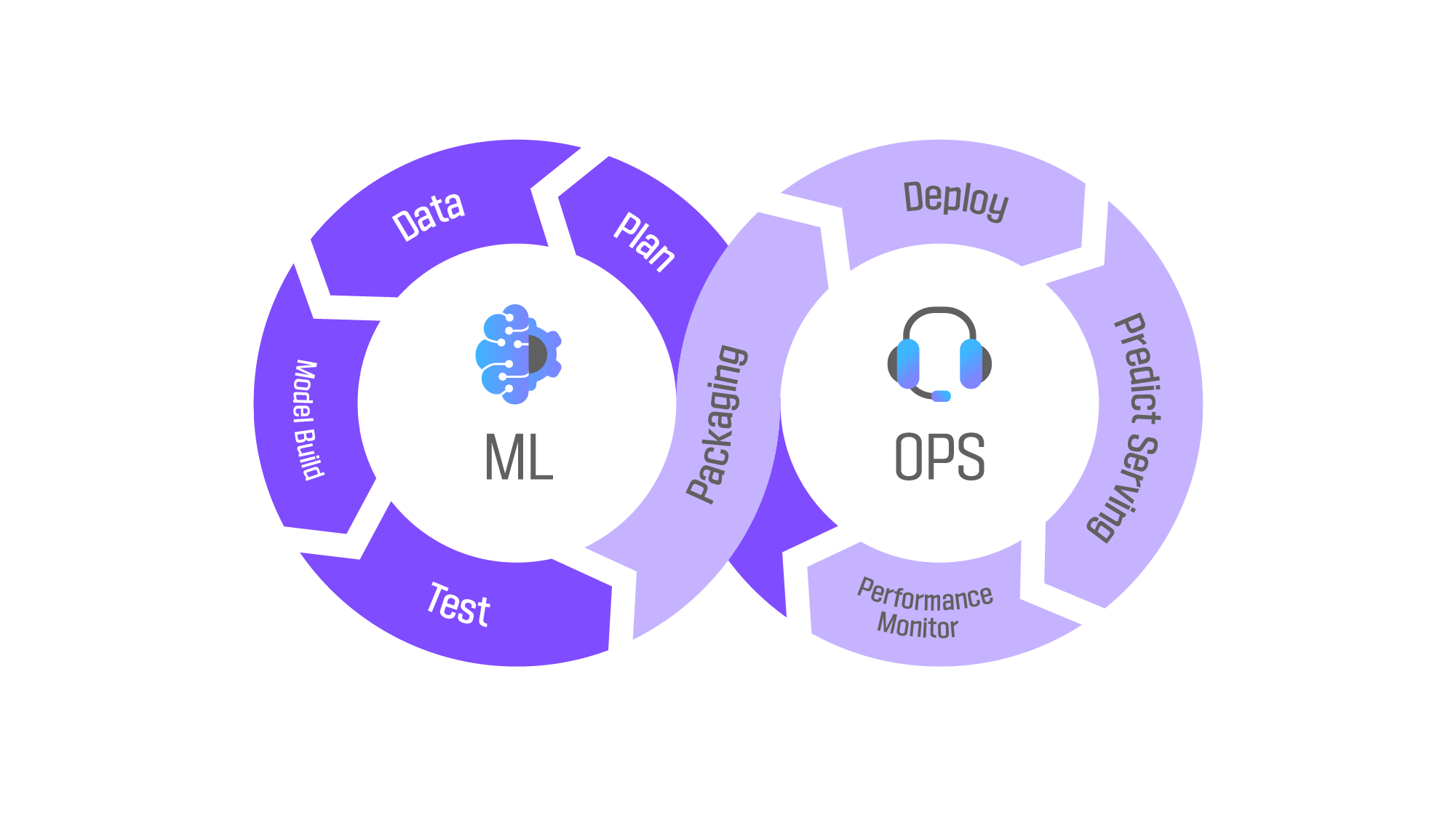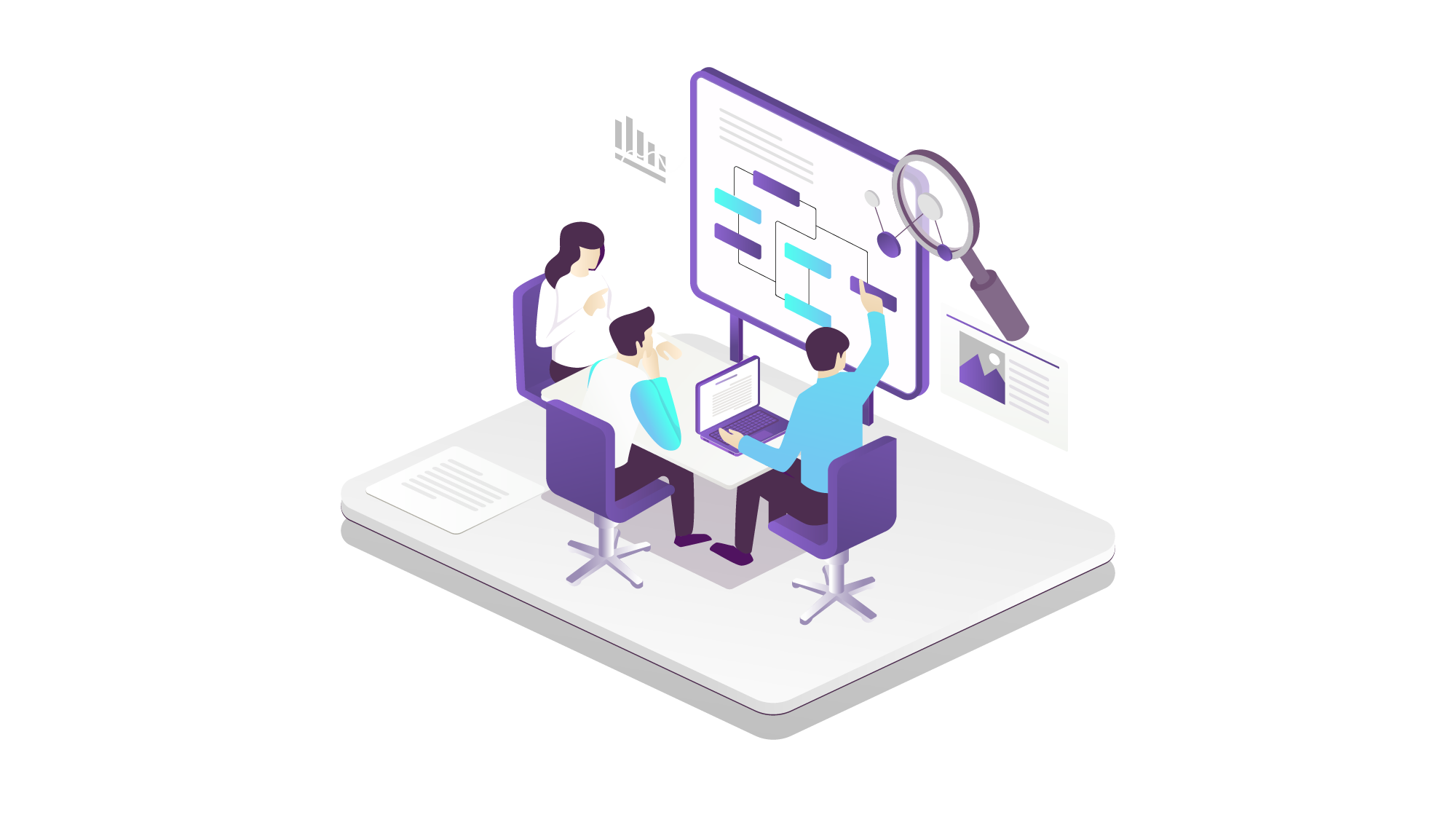What are MLOps and why do you need them?
Elice
7/15/2025
an unfamiliar term, it is used often in the IT industry. With the recent increase in AI technologies, MLOps was created to efficiently provide services such as data collection and management, and the operation and development of machine learning models. In fact, in the AI industry, it is not only imperative to manage data and develop machine learning systems, but also for users to be provided with stable operation services. The concept of MLOps emerged to solve the inefficiency that would arise from dividing development and operation tasks into two separate teams.
So today, I will introduce and break down what MLOps is, and its growing necessity as AI and algorithms become more sophisticated.
What is MLOps?
MLOps is a term that combines Machine Learning and Operations and is responsible for maintaining, managing, and monitoring the consistent deployment of machine learning (ML) models in production environments. MLOps integrate machine learning model development and operations so as to automate the maintenance and operation of ML systems. MLOps covers not only the development of machine learning models, but also the data collection, analysis, training, and deployment stages, and thus the entire AI lifecycle.
MLOps also encompasses machine learning (ML), software development and operations (DevOps), and data engineering (DE), and so MLOps can be considered the intersection between ML, DevOps, and DE.

Differences between MLOps and DevOps
DevOps is a combination of the terms Development and Operations. DevOps lives up to its name as an environment or medium in which the boundaries between development and operations are blurred, thus allowing teams to collaborate in developing ideas and deployment. DevOps aims to improve the development process that stems from inefficiencies in communication and productivity, thus speeding up the process of delivering value to users. To match the goal of faster development and delivery, the scope of DevOps includes collaborative methods, security, data analytics, and all that pertains to responding to market changes acutely.
The application of DevOps methodologies to ML systems is called MLOps. Just as DevOps emerged to improve inefficiencies in software engineering, MLOps emerged to improve the efficiency of machine learning (ML) and AI development. In this respect, MLOps and DevOps are aligned in their goal for improved outcomes in the quality of products, faster releases, patching, and higher customer satisfaction.
There are two main differences between MLOps and DevOps: The first is that MLOps is limited to ML projects, while DevOps is broadly adopted across all areas of engineering. The other difference is that MLOps requires continuous training on new data during production, as machine learning does not end with service deployment.
What is an MLOps platform?
The MLOps platform provides a collaborative environment for software engineers and data scientists. It enables real-time collaboration and iterative data exploration to facilitate experiment tracking, model management, feature engineering, and more.

Composition of MLOps
The scope of MLOps in a machine learning project varies depending on the need. Sometimes they oversee the entire process of a project, and sometimes they are only involved in the model deployment process. Because of the various parts of the development process of machine learning MLOps is involved in, collaboration between different areas (code, software, data processing, analytics, and AI service performance checks) is necessary. During this stage, MLOps can be broadly categorized into two main processes: model creation and model deployment. The general outline of these parts is as follows.
- Model creation: Utilizing data for model development
- Exploratory Data Analysis (EDA) and data preprocessing
- ML model training and review
- Deploying the model: utilizing incoming data through the actual model
- Deploying and monitoring models
- Automatic model retraining
Conditions for MLOps
There are several conditions for efficient model development and operation through MLOps.
- Continuous Integration (CI)
- Regularly build and test changes to the code and integrate them into a shared repository.
- Continuous Deployment/Delivery (CD)
- Automatically deploy model forecasting services such as pipelines and models.
- Continuous Training (CT)
- Automatically train and update models whenever data is updated or new data comes in. Since it learns from new data, “Data & Model Validation” is required.

The need for MLOps
MLOps is a useful approach to facilitate the creation of AI solutions and maintain data quality. Machine learning engineers and data scientists can adopt the MLOps approach and collaborate to speed up model development and deployment. To achieve this, it is essential to implement a continuous integration, deployment, and learning (CI/CD/CT) cycle by appropriately monitoring and verifying the ML model.
Why MLOps?
The development and deployment of systems is not the end of the story for the AI industry as reliable services must be provided through continuous operation. Maintaining a stable service delivery is crucial through ongoing “operations.” Inefficiencies like data silos are likely to arise when development and operation are handled separately. Developing and deploying AI models is relatively easy, but maintaining and evolving them is resource intensive, which is where MLOps come in.
Machine learning models are difficult to mass-produce. The machine learning lifecycle includes numerous intricate components, including data collection and preparation, model training, adjustment, deployment, and monitoring. Furthermore, collaboration and communication between multiple teams, from data engineering to data science and machine learning engineering, are required, making the process quite complex. Taking these aspects into account, MLOps has emerged to encompass the complete machine learning lifecycle, allowing for experimentation and continuous enhancement through iterations. Its value lies in providing operational principles that synchronize all processes and facilitate effective collaboration.
The Core of Digital Transformation: Theory and Application of AI Technology - Watch Now
Advantages of MLOps
1. Efficiency: Reduces development time by integrating system development and operation.
MLOps provides quality machine learning models and enhances deployment and production times. Efficient management improves release times as it allows multiple teams to collaborate closely and reduces conflicts between DevOps, development, and operations teams.
2. Scalability: You can continuously manage and deploy thousands of models.
MLOps is specialized in scalability and maintenance management. It can automatically manage, supervise, control, and monitor a large number of models, as well as integrate and deploy them.
3. Reliability: enhances transparency and aids compliance with industry regulations.
ML models require thorough regulatory review and drift checking. With MLOps, proper monitoring, verification, and governance of the model creation process allows for more transparency and timely responses to requests. In addition, continuous integration, deployment, learning, and automated management of ML systems; the prerequisites for MLOps, allow for data quality to be reliably maintained at high levels.
In this module, we examined the concept of MLOps and their necessity. Many companies are trying to build an efficient MLOps ecosystem. The GPUs used to train models play an important role in performing ML tasks. However, many people find the price of GPUs to be burdensome or find them difficult to utilize as most of the services are located overseas. I would like to introduce the Elice GPU service to these very people.
With the Elice GPU service, you can be allocated as many resources as you want in real time for conducting AI training or research. Because it uses domestic server farms, it also has the advantage of complying with data sovereignty regulations pertaining to sensitive data. You will also experience low latency and fast data transfer speeds. Elice GPU can provide customized GPU solutions for your various needs. If you are interested in utilizing GPUs, we encourage you to contact our expert consultants for a consultation!
Elice Cloud Service: Revolutionizing Domestic Cloud Services - Watch Now
Inquire about adopting Elice GPU Services
*This content is a work protected by copyright law and is copyrighted by Elice.
*The content is prohibited from secondary processing and commercial use without prior consent.
- #MLOps
- #DX
